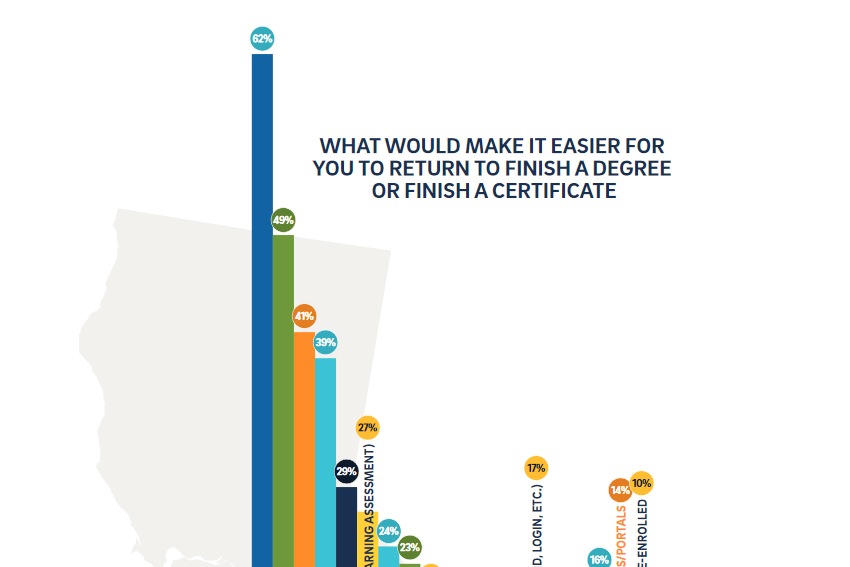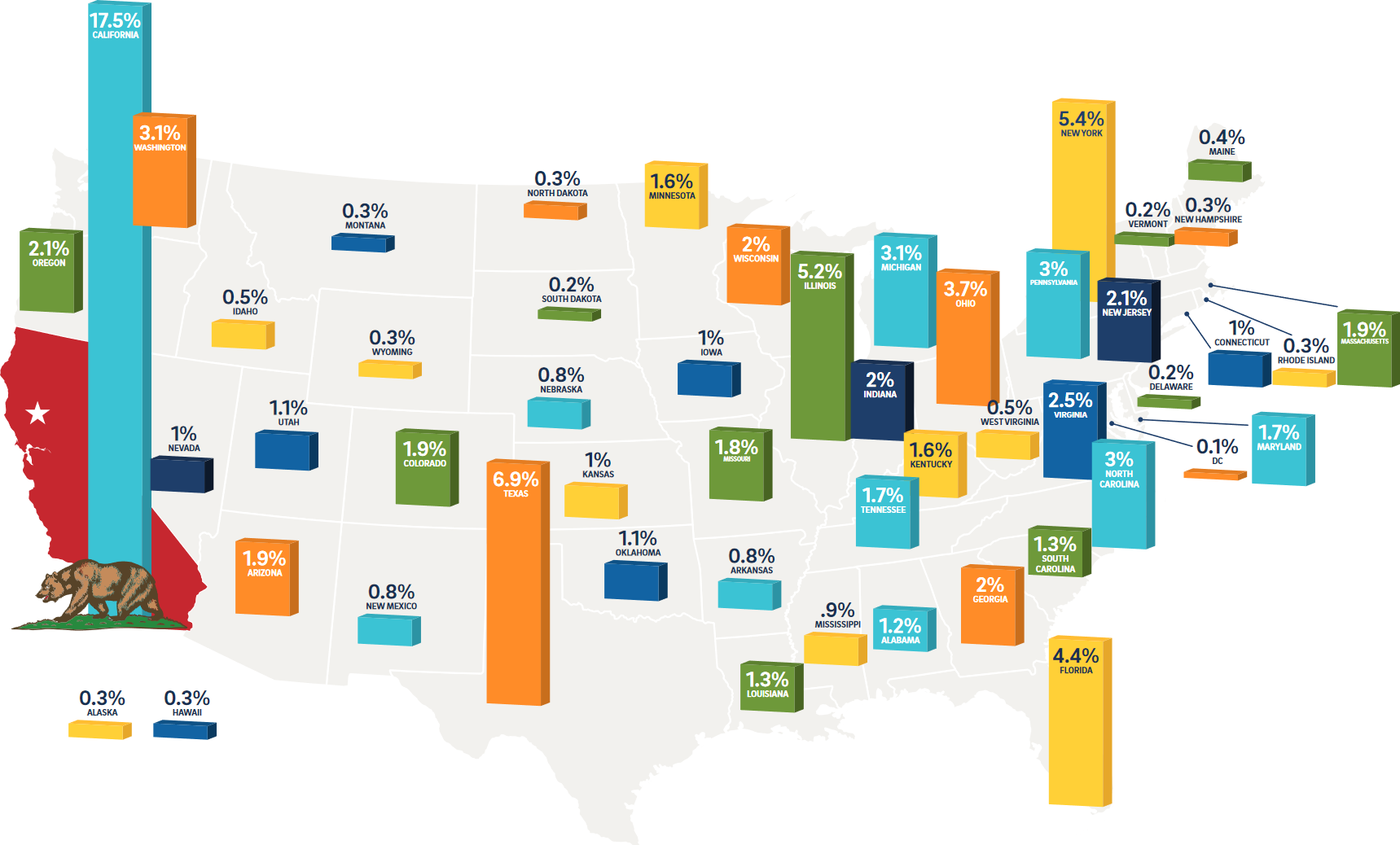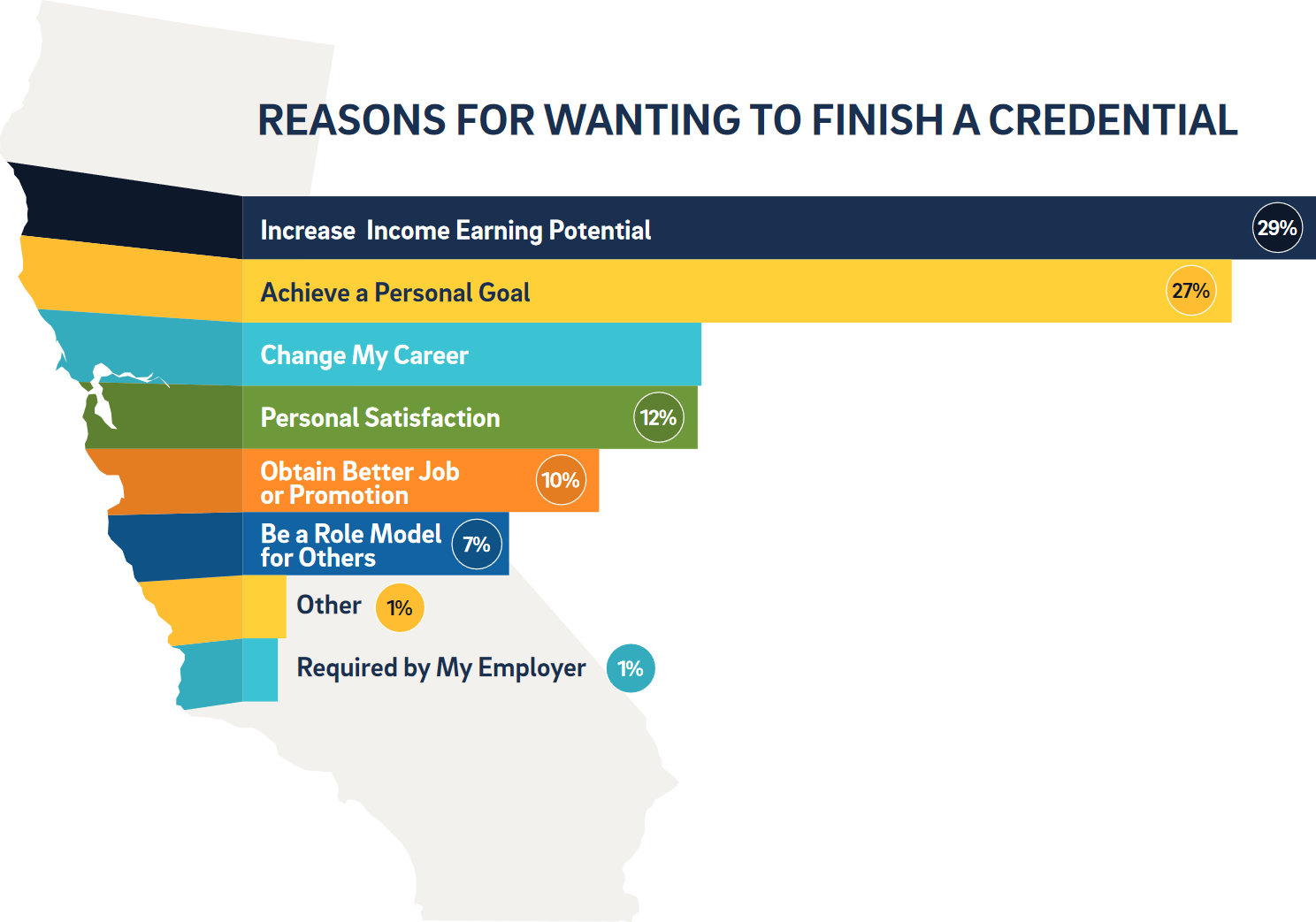By Kelly Nielsen

There are many social, economic, and individual benefits of earning a degree or professional certificate, which is why nearly all states have set higher education attainment goals. According to US Census data, just over a third of American adults 25 years old and older have earned a four-year college degree and around 10 percent have earned an associate’s degree. At the same time, many more people have enrolled in some form of higher education than have earned a credential. That’s because not everyone who begins higher education finishes; millions of students stop out along the way.
Helping these students return to higher education and finish a credential may be one of the best ways for states to reach their attainment goals and individuals to achieve their personal and professional aspirations. After all, stop outs have already taken steps – in some cases, many steps – towards completion. So what can we do to support them?
Growing Number of Stop Outs
On May 10th, the National Student Clearinghouse released their annual report on Americans with some college but no credential. The Clearinghouse, which tracks college enrollments around the country, estimates the number of adults with some college but no credential to be 39 million and growing
California accounts for by far the largest number of the nation’s stop outs with 6.4 million adults with some college but no credential (the next closest is Texas with 2.5 million stop outs). This is partially due to the state’s large undergraduate population: 2.7 million students during the 2020-2021 academic year. When looking at stop outs per 1,000 undergraduates, California with 2,354 people with some college but no credential ranks 19th in the country. While not the largest number of stop outs as a proportion of undergraduates, the total number of stop outs far surpasses the rest of the country. This means California plays an outsized role in increasing the number of adults with a postsecondary credential. With 15.9 percent of the nation’s undergraduates and 17.5 percent of its stop outs, California can make a major difference in supporting degree attainment, but how?
Number of adults in each state with some college but no credential per 1,000 undergraduates enrolled in that state during academic year 2020-2021.

Source: Causey, J., Kim, H., Ryu, M., Scheetz, A., & Shapiro, D. (May 2022), Some College, No Credential Student Outcomes: Annual Progress Report – Academic Year 2020/21, Herndon, VA: National Student Clearinghouse Research Center.
California Stop Out Survey
In the fall of 2021, the UC San Diego Center for Research and Evaluation (CR+E) together with the University of California Office of the President (UCOP) surveyed over a thousand Californians between the age of 18 and 44 who had stopped out before earning a bachelor’s degree. The aim of the California Stop Out Survey was to learn about their interests in finishing a credential (or earning a bachelor’s degree if they had already finished an associate’s degree or professional certificate), the barriers they face to returning to higher education, and what they believe would help them achieve their educational goals.
Of the 1,059 respondents, three quarters had not earned any postsecondary credential, 13 percent had earned a professional certificate, and 12 percent had earned an associate’s degree. Over 80 percent said they were interested in finishing a credential, including 86 percent of respondents who had already earned an associate’s degree or professional certificate. The largest group of respondents was only somewhat interested (33 percent) in returning to finish a credential, but nearly half were either very interested (29 percent) or definitely interested (19 percent).

Their reasons for wanting to finish a credential were both personal and professional. Over half said that money or work was their primary reason for wanting to finish, such as increasing their income earning potential (29 percent), changing their career (13 percent), or obtaining a better job or promotion (10 percent). Personal reasons were only somewhat less common and included achieving a personal goal (27 percent), personal satisfaction (12 percent) and being a role model for others (7 percent).

In addition to gauging their motivation to return, CR+E wanted to know what is standing in their way. Financial obstacles are the main barrier. Respondents cited cost of attendance (54 percent), financial obligations/cost of living (43 percent), and application fees (40 percent) as barriers to re-enrolling and completing a credential. On top of money, California’s stop outs lack the time and flexibility to be college students. Forty-three percent said that balancing work and studying was a problem while 28 percent are busy caring for family members or significant others.

Given these obstacles, it’s no surprise that the top supports respondents believe would help them return and finish are financial aid (62 percent), flexible course scheduling (49 percent), money for living expenses (41 percent), and online (39 percent) and accelerated (29 percent) courses.

Taking the Next Step
According to the National Student Clearinghouse, nearly a million stop outs re-enrolled during the 2020-2021 academic year. In California alone, over 130 thousand students re-enrolled, around two percent of the state’s stop outs. Yet stop outs increased over five percent from 36 million to 39 million between December 2018 and July 2020. All but two states saw increases in the number of people with some college but no credential.
Many stop outs are well on their way to a credential. Nearly two-thirds of survey respondents have completed at least one year of higher education and a fifth reported completing more than two years. Increasing financial support will certainly help more stop outs re-enroll in higher education and finish a degree or certificate. At the same time, colleges and universities need to provide fast and flexible options for people who may be working, caring for others, or both. Notably, only five percent of survey respondents said they are most interested in learning completely in person while over half would prefer learning either mostly or completely online. UC San Diego’s Division of Extended Studies is a great example of a higher education organization that has created excellent online programs that fit with adults’ busy schedules and can serve as models for other colleges and universities to follow.